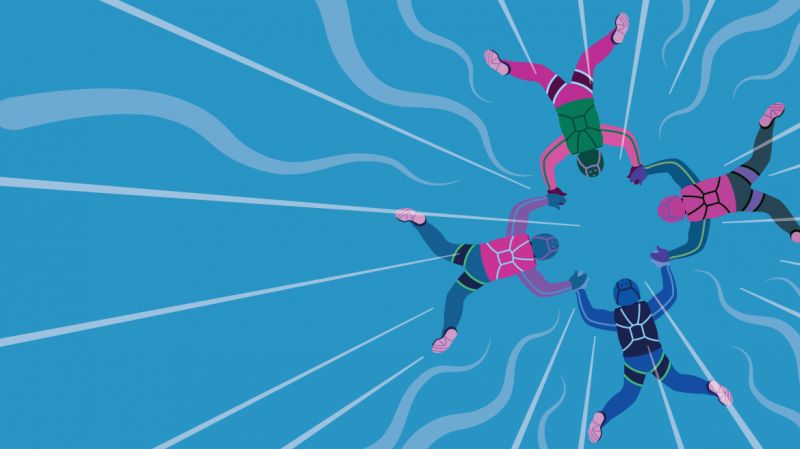Ignore Consumer Activists At Your Peril
Social change may be messy and unpredictable but there’s a way for organizations to be a more productive voice without being targeted

We usually view boycotts, ethical shopping, flaming social media posts and other frothy forms of consumer activism through a marketing lens—as tactical attempts to influence corporate behaviour. But Jay Handelman invites us to view such activities through the lens of social change.
It makes sense. Consumer activism is perhaps the most common form of political engagement. Even though consumers may struggle to articulate why they’re all worked up, their activities in the village square can coalesce into a new understanding of social good. There’s something bigger happening behind the boycotts and social media posts, if we are only willing to ask the right questions. “Rather than looking at the actions,” says Handelman, an associate professor of marketing at Smith School of Business, “it’s worth looking at what’s beneath the surface.”
Handelman was invited by an academic journal to be guest editor (with Henri Weijo of Aalto University School of Business) for a special issue on consumer movements and activism. That experience, combined with decades of his own research, has sharpened his thinking on three forms or paradigms of consumer activism. In this conversation with Insight senior contributor Alan Morantz, he discusses the evolution of activism in the marketplace, and how organizations should respond.
Most people associate consumer activism with campaigns in which there is an identifiable good guy and bad guy, like boycotting Nike over sweatshop conditions in their manufacturing plants. You have suggested that such campaigns are driven by a “conflict paradigm” of activism, a form of consumer activism that sits on one end of a continuum. What lies at the other end?
The other end of the continuum, I would argue, is the most common kind of activism now, and the toughest to get your head around. It’s the activism where targets are other consumers, what we refer to as the radical imagination paradigm.
The idea here is that people engaged in this form of activism are not articulating a particular goal; it’s not like they want company X to stop action Y. But rather, they’re saying, “If only other people would see the world as I do. I’m going to get on social media and rant about how people don’t understand how terrible things are.”
The problem is that we all think that. We’re all on social media yelling at each other and not really listening. How does that lead to change? It’s really difficult to quantify.
But social change usually doesn’t happen because of one grand act of activism. The George Floyd murder was a seismic event that triggered massive protest. That got all the attention. What we don’t think of are all the daily interactions where we’re yelling at each other. We’re expressing a view of the world that becomes part of our collective imagination. It defines what each one of us finds acceptable or not acceptable in day-to-day life. And it puts boundaries and guardrails on the actions of individuals and companies.
There is this metaphor that society is built on magma. Society is always shifting in ways we can't quite quantify. But then you wake up one morning and say, “Things are different now than they were five years ago. I don’t know how that happened, but they just are.”
If the conflict paradigm is on one end of consumer activism and the radical imagination paradigm is on the other, what sits in the middle?
There are times when these two extremes come together in the form of strategic coalitions of different actors. It’s not just consumer versus company — consumer groups themselves can be fragmented. So the “us versus them” isn’t a David and Goliath metaphor but different stakeholders that collectively agree on a particular view of the world.
I can think of two examples. The one that worked was Nike’s campaign in 2018 with (former NFL player) Colin Kaepernick, when they aligned themselves with Black Lives Matter activism. It’s very risky for a company to take a political stance, but it worked for Nike. The reason it worked was because over the years, Nike had built the credibility to make a statement like this in the sporting world. They had a coalition of people, particularly athletes and Black activists, who said, “We appreciate Nike doing this and giving voice to the cause.” Nike had legitimacy.
One that didn’t work was when Bud Light partnered with Dylan Mulvaney, the transgender activist. In that case, Bud Light had no coalition. They hadn’t worked in that space and had no credibility. They end up being attacked on all sides. People in the trans community said they were using the issue to make a profit, and folks on the conservative side felt abandoned.
What that says is that if you want to have social change, it’s not just about the loudest voice. It’s about building a coalition of stakeholders and fragmented groups in society that align to a particular view.

Brands navigate around the challenges of activism in a number of ways. Some are now activists and “allies” themselves. Is it wise for brands to take this risky path, or should firms just stick to selling products and services that address consumer needs?
There are very few brands that can do what Nike did. The vast majority of brands shouldn’t be doing that. That’s not the space they should be in.
But for a company to say, “We just sell products and don’t care what's happening in the world,” that’s a risky place for brands to be because they do exist in the world. Their customers are actively engaged in politics or environmental or social issues. So they have to embrace the power of that space and not fight it.
Look at McDonald’s. Go to a McDonald’s parking lot and you’ll see electric vehicles and pickup trucks—people from a cross-section of society. And what’s McDonald’s political stance? Well, I don’t know what they stand for, nor should their customers. But it doesn’t mean McDonald’s puts their head in the sand and says, “We just sell burgers.” McDonald’s has been transformative in how they manage in the social media space by being a company of openness as opposed to a company of closure. They used to be a company of closure: If you say something bad about us, we’re going to sue you.
In 2012, McDonald’s created a website called Our Food, Your Questions. It was an open site, and people could say anything they wanted about the company: You’re the worst company in the world. You slaughter animals. They put all that on their website and acknowledged, “We’re going to let you be angry with us and give others a voice over how we respond.” They didn’t deny. They didn’t fight and sue, but neither did they say these issues don’t exist.
When you become a force for openness, it tends to give you license to just sell products, and no one will bug you about it. Think of the grief McDonald’s got in the past about the products they sold; today, they just don’t get that grief even though they sell the same products.
Is there a way for brand strategists to apply these three paradigms of activism to how they approach their job?
It’s worth thinking about strategically. McDonald’s at one time did reside in the conflict paradigm, but that’s not where you want to be. You become the poster child for every single radical imagination out there, and you don’t have enough lawyers to win that battle. If you find yourself in that position, you need to get out.
There are two parts to getting out of that conflict paradigm. The first is recognizing that societal magma exists. People have a voice, whether you like what they’re saying or not.
The second is to form coalitions to be part of the movement. Not to drive it, not to define it, not to tell people what they should be thinking. But to respect it. You don’t become an isolated member of society by pretending these conversations don’t happen, nor are you the target for those conversations. It’s finding that space as a brand to build coalitions around an open platform for people to express their views.
It may be foolhardy to ask, but do you have any sense of where the trajectory of consumer activism is headed?
Over the course of my career, I’ve seen its evolution tilt away from the conflict paradigm, where you have clear “us versus them” characters you could identify. As time has gone on, social media has made centralized activist voices and organizations become less and less relevant. Years ago, Adbusters was a centralized activist voice, very influential, but their voice has weakened as the pendulum swung towards the radical imagination and strategic coalition end.
What I wonder is that as we get into a world of deep deepfakes, where none of us can trust what we’re hearing and seeing, will we want to hear from some trusted entity like Adbusters, or some organization whom we can trust? We may find ourselves back to that conflict paradigm again, where you have a clear “us versus them”, the clear David and Goliath dynamic, because at least we know who the players are.





